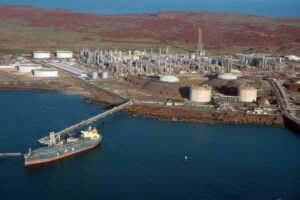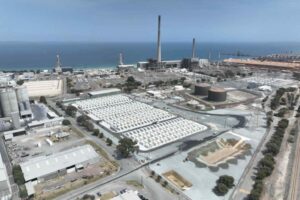The Labor government described the 2013 budget as “stronger, smarter, fairer”. The Greens dismissed it as “weaker, dumber, meaner.” On the issues of climate and clean energy policy, the Greens were probably closer to the mark.
Given the inevitable decline in fossil fuel generation and fossil fuel exports, it seemed an opportunity to boost funds that would enable the transition to a cleaner economy. But the big picture message from the budget was heavy compensation for coal fired generators, the slashing of funds for ‘clean coal” technologies, and the deferment and trimming of fund for new renewable technologies.
On the plus side, the government actually accelerated funding that is allowing manufacturers to be more efficient and reduce emissions. The carbon price forecasts have been completely redrawn.
Here’s a quick breakdown:
ARENA:
The big ticket item was the cut in funding for the newly “independent” Australian Renewable Energy Agency, and the deferment of more funding beyond 2020. We go into detail here, but essentially $160 million of unallocated funds from an “education” program has been returned to the budget, reducing the overall financial muscle of the agency to $3 billion from $3.2 billion.
However, of the remaining money, $370 million has been chopped off from the years 2014/15 through 2016/17, and back-loaded after 2020. The scheme has been extended for two years. ARENA gets an extra $6.1 million to hire more staff.
The Greens, environment and clean energy groups were appalled, but ARENA said the “reprofiling” may actually suit the way it intends to allocate funds. Read here to find out why.
Clean coal and carbon capture
The Federal government slashed funding for the Carbon Capture and Storage Flagships Program by $500 million over three years. The program, which was originally supposed to allocate $2.4 billion, now stands at $1 billion. “Even with billions of dollars of public money on the table that technology is dying a quiet death,” noted Mark Wakeham from Environment Victoria.
Industry insiders suggest that CCS needs a high carbon price, a high oil price, and industry support, to offset its huge up front costs. At the moment, it has none of those. Given that the IEA sees CCS as critical for reducing emissions over medium to long term, and to reduce impact on new gas generation, more will need to come from renewables.
Low emissions coal initiative
The Government has also cut $88.2 million over two years for the National Low Emissions Coal Initiative. The program, designed to support the development and deployment of technologies that aim to reduce emissions from coal use, has been cut by almost half.
Community and low income energy efficiency programs
The Government will not proceed with further funding rounds for the Community Energy Efficiency program and the Low Income Energy Efficiency program, cutting nearly $100 million, or more than one third from the total allocation. Funding for previously agreed and round 2 projects will continue.
Carbon price
The government has dramatically reduced its forecasts for the traded carbon price, inevitable given it is now tied to the EU scheme. Forecasts for the carbon price have been slashed from $29 in 2015/16 to $12.10. As a result of this, a second round of tax cuts to offset the impact of the carbon price have been deferred. Labor suggests this will now be till 2018/19, when its straight line modelling of the carbon price suggests it will move above $25.40. That prediction may now be a little academic given the likely change of government, although it is not entirely clear that an Abbott government can or would repeal the carbon price.
As a result of that carbon price forecast, total compensation for trade exposed industries has been reduced by $4 billion over the forward estimates. Coal-fired generators will get $279 million less from 2015, although this is entirely because the value of the permits will be reduced.
And now, the good news.
One welcome initiative was the decision to retain funding for the Clean Technology Investment Program and the pulling forward $160 million of those funds to 2014/15. Jon Jutsen, from Energetics, who raised fears about the program being cut earlier this week, said the CTIP had been very popular with business and has started to release the large pool of undeveloped energy efficiency opportunities in industry, much of which can be attained at a cost of less than $20/tonne.
“Most industrial businesses can cut 20% from their energy use by implementing projects and business practice improvements that pay back in less than 3 years, and the CTIP program allows many projects with up to 5 or 6 years payback to be considered by businesses as well – in many cases doubling attractive savings,” Jutsen says.
“Our experience is that if this program, or other similar incentive programs can stay in place for say 3 years, they can change the culture of organisations – making energy efficiency a part of core business. Continuity is key. CTIP has been operating for barely 12 months and many companies are still in the stage of project identification. Another year or 2 and many of the initial projects identified can be drive to completion with a continuation of incentives.
“This is particularly important at a time when manufacturing is struggling and is about to be slugged with substantial natural gas price increases once the east coast LNG plants come on line.”








